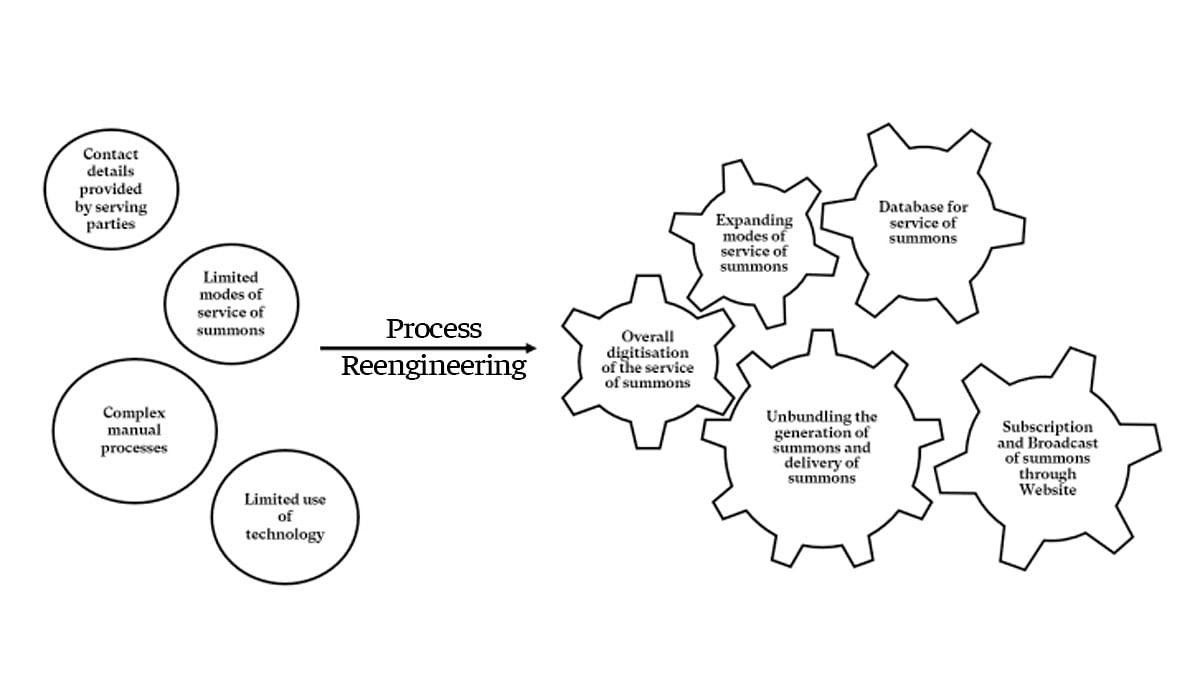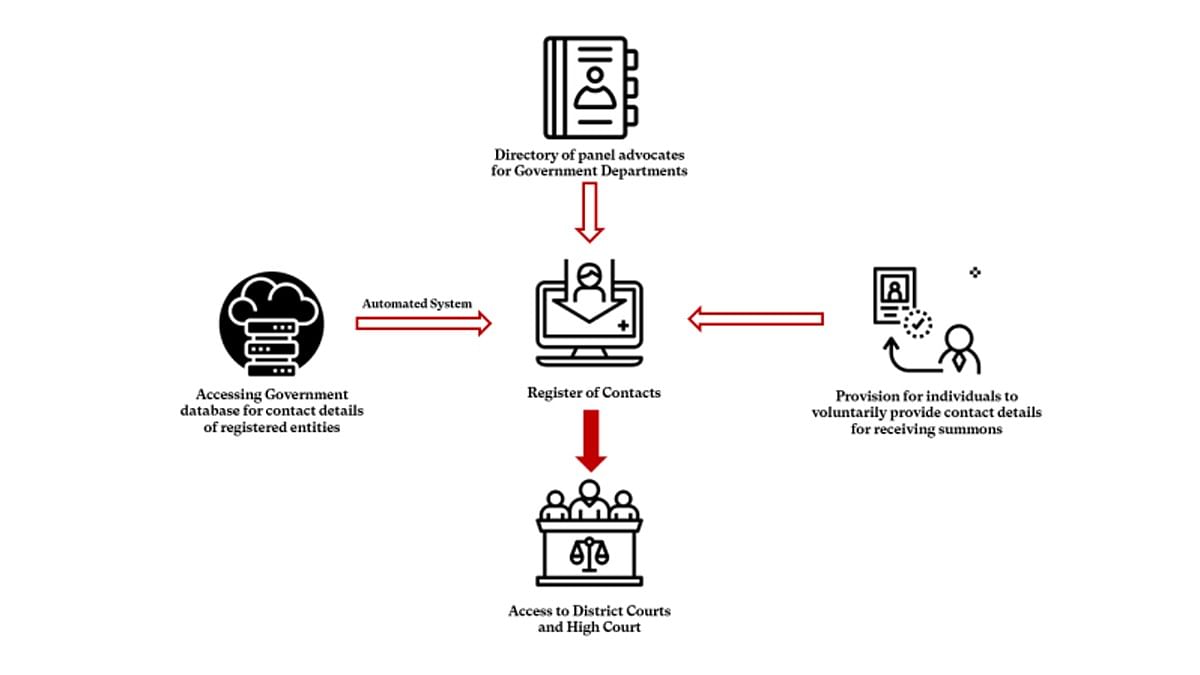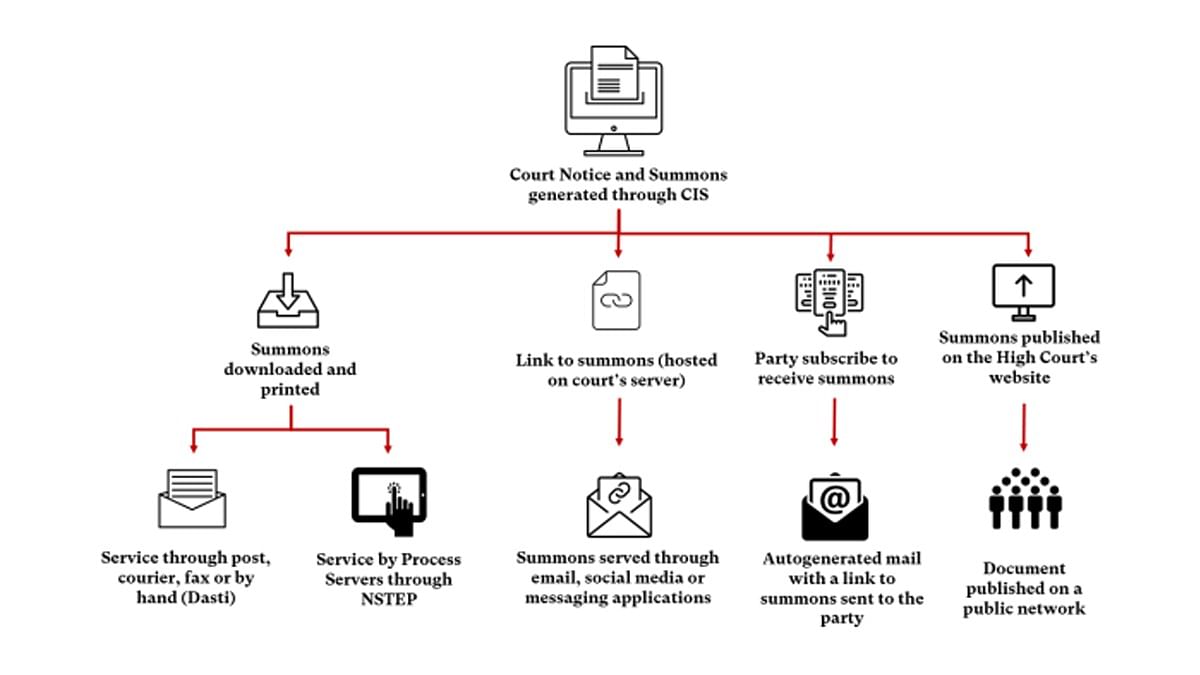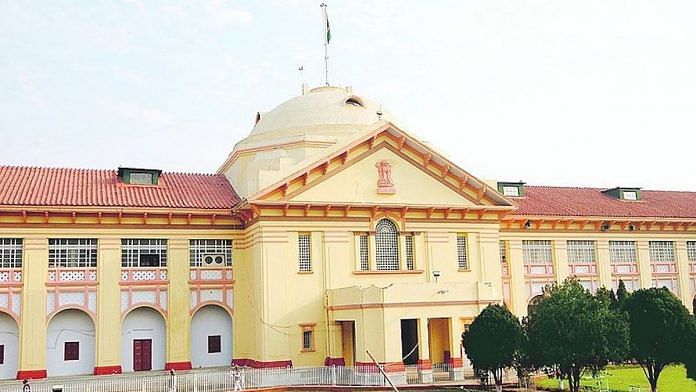Over the last two decades, under the e-Courts Mission Mode Project, the judiciary has taken several steps to integrate technology into judicial processes. These initial and prompt efforts have equipped the judiciary to provide access to justice to litigants during the COVID-19 pandemic. The early success has made it amply clear that the future of the judiciary rests on the immense potential that technology holds in simplifying and re-engineering complex judicial processes.
The service of summons is one such judicial process that can benefit through technology integration. As per a study conducted by Vidhi on Bangalore Rural Courts, the notice/summons stage accounts for 1/4th of the life cycle of a civil suit. On an average, 273 days are spent by the court in the process of serving summons, thereby making summons a major cause of delay across courts.
Vidhi’s new report by JALDI (Justice, Access and Lowering Delays in India) initiative, studies the roadblocks in the process of serving summons and the initiatives taken so far to address delays at this early stage.
The report recommends process reengineering and integration of technology to eliminate existing bottlenecks and improve efficiency. To provide a comprehensive framework, a set of Model Service of Summons Rules is provided as an addendum to the report.
Also read: The real threat in Yogi govt’s anti-conversion law lies in its ambiguity
Current process of serving summons
The Code of Civil Procedure (CPC), 1908 provides the procedural law to govern the service of summons at a broader level. To further regulate and detail out the process, High Courts have notified practice and procedures to be followed by specific High Courts and District Courts under their jurisdiction as mandated by the CPC, 1908. The following flowchart, premised on the procedure followed in the City Civil Court, Bengaluru, provides details of the process generally followed for the service of summons. For further details, please see pgs. 7-9 of the report.
Process followed at Bengaluru City Civil Courts

Also read: Supreme Court’s Shaheen Bagh judgment is well-meaning judicial anguish, not binding law
Reasons for inefficiency
There are multiple causes of delay for the service of summons. As is visible in the previous illustration the process is complex and rather archaic, yet inadequate. A breakdown in the form of a visual snapshot of the causes is provided in the table below. For more details, please see pgs. 10-13 of the report.

Also read: Karnataka State Commission will take 7 yrs to dispose of all consumer disputes: Study
Solutions attempted so far
In the last two decades, the Judiciary and the Ministry of Justice have taken pro-active measures to address the inefficiency and delays in service of summons. Most of these measures were introduced under the eCourts Project.
Phase II of the eCourts Project attempted ICT integration in the summons process by introducing auto-generation of summons and delivery of summons through NSTEP – a mobile application and portal to assist process servers and to ensure accountability. Other initiatives include allowing summons via email and WhatsApp through following judicial precedents. Though novel in their own right, these measures have not been implemented or taken off at scale. Similarly, while Order V Rule 9 allows High Courts the powers to make rules regarding their own procedures, courts have seldom used this provision to modernise the summons processes. For further details, please see pgs. 14-17 of the report.
Also read: India needs laws to regulate app stores but first know how Google, Apple control the system
Way forward – process re-engineering and solutions
Standalone interventions attempted by the Judiciary have been insufficient to address the inefficiencies of the summons process. There is a need to re-engineer the current processes and streamline them to produce more efficient results, as illustrated below.

This process re-engineering can be achieved through interventions at three levels:
Diversifying methods of collecting information about parties: Currently, the courts rely solely on the party serving summons (serving party) to provide contact details of the party to whom the summons is issued. Often, this places excessive burden on the serving party. Further, incorrect or insufficient contact details submitted by the serving party delays the process.
The court should endeavour to develop its own capacity and reduce over-reliance on the party serving the summons to provide the correct address. This can be achieved in three ways, including by having a robust directory of panel advocates; by judiciary having access to other government databases which store information such as the Ministry of Corporate Affairs and the Land Records Department, and by individuals proactively providing their information to the High Courts’ websites to subscribe for future summons. Refer to illustration below. For further details, please see pgs. 19-20 of the report.

Re-engineering internal processes of generation and storage of summons: As part of the e-Courts Project, the judiciary has incorporated auto-generation of summons under court management software, CIS 3.0. As a next step, the Ministry and the judiciary should consider unbundling the generation of summons from its delivery to improve its efficiency. Unbundling refers to taking out smaller processes from a system and improving these processes individually.
Through this process, the generation and storage and service of summons should be unbundled and developed individually to include authenticating summons documents through digital signatures and QR Codes and cloud storage on the High Court server. This will ensure authenticity and reliability of summons regardless of the mode of service and streamline the process. For further details please see pgs. 20-22 of the report.
Expanding modes of communication for service: Though, the judiciary has recognised service of summons through electronic modes, emails and messaging apps, these modes are seldom used. In addition to scaling up the use of these recognised electronic modes, the judiciary should also explore other ways for serving the summons efficiently. These include the publication of summons on the High Court website, service of summons through subscription and utilisation of the N-STEP application. Refer to the graph below for a detailed picture. For further details, please see pg. 22-25 of the report.

Since the overall recommendations mentioned in the report are novel introductions it is necessary that they be supported with a strong governance framework that can protect the confidentiality and security of the data recorded and the privacy of the individuals involved. Therefore, key areas that can form a part of such a framework have been identified. These range from the restrictive use of communication tracking technology to storage and destruction of data. For further details, please see pgs. 26-27 of the report.
For easy reference, all the suggested solutions have been converted into actionable tasks from pgs. 28-30 of the report.
Also read: Make Indians invest, not donate. Bharat Navnirmaan Bonds can be answer to fund crunch
Model Service of Summons Rules, 2020 developed in this report
The Model Service of Summons Rules, 2020, appended to the report, recommend an ideal legislative framework for High Courts to effectuate process re-engineering and establish an efficient summons process. The rules govern procedures related to technological innovations to diversify methods of collecting contact information, expanding modes of communication for service, and improving efficiency of internal processes as explained above. They identify how proof of delivery can be ensured, the format in which summons can be served, and outline the procedure in case service if it has failed. They also identify special rules for service to body corporates, publication of summons through newspapers and detail the role of the Register General. For further details, please see pgs. 31-46 of the report.
These rules are supplemented by an explanatory document, which notes the rationale for the rules and compares the Model Service of Summons Rules with similar rules notified by the Delhi High Court and the Bombay High Court. For further details, please see pgs. 47-59 of the report.
Vaidehi Misra and Aditya Ranjan are Research Fellows at JALDI. Deepika Kinhal is the Lead & Senior Resident Fellow at JALDI. Views are personal.
The article is an extract from the report titled Summons in the Digital Age: ICT by JALDI (Justice, Access and Lowering Delays in India) initiative at Vidhi. Read the full report here.
This article was originally published by the Vidhi Centre for Legal Policy.






